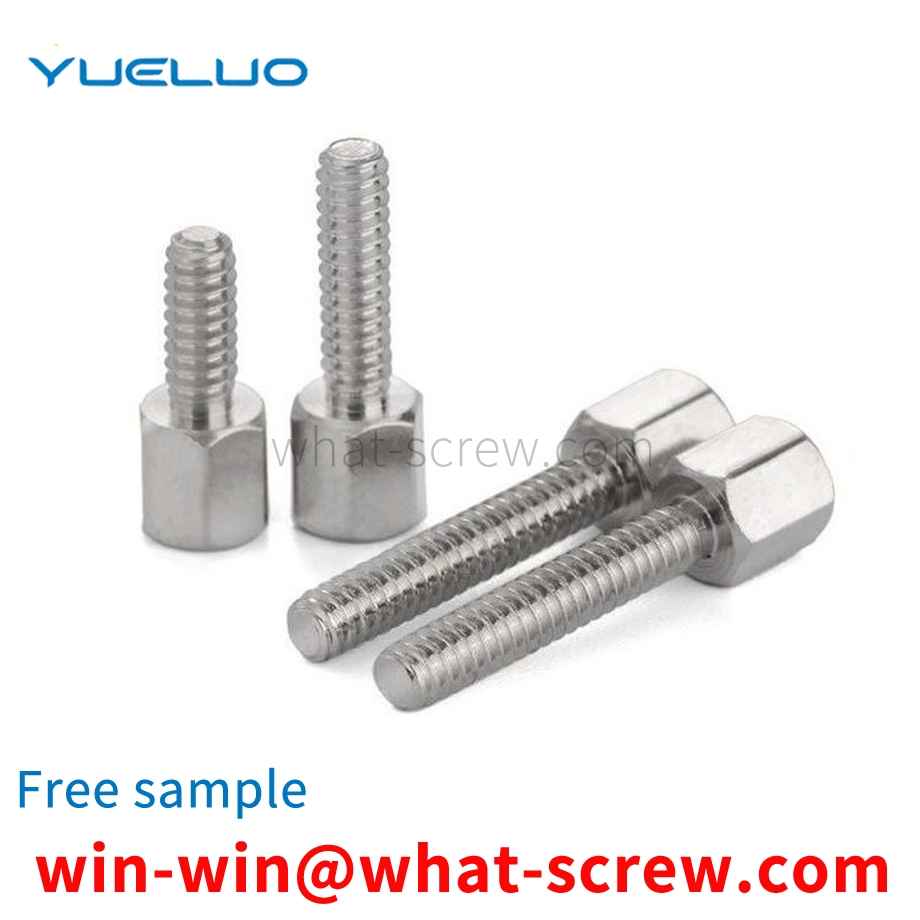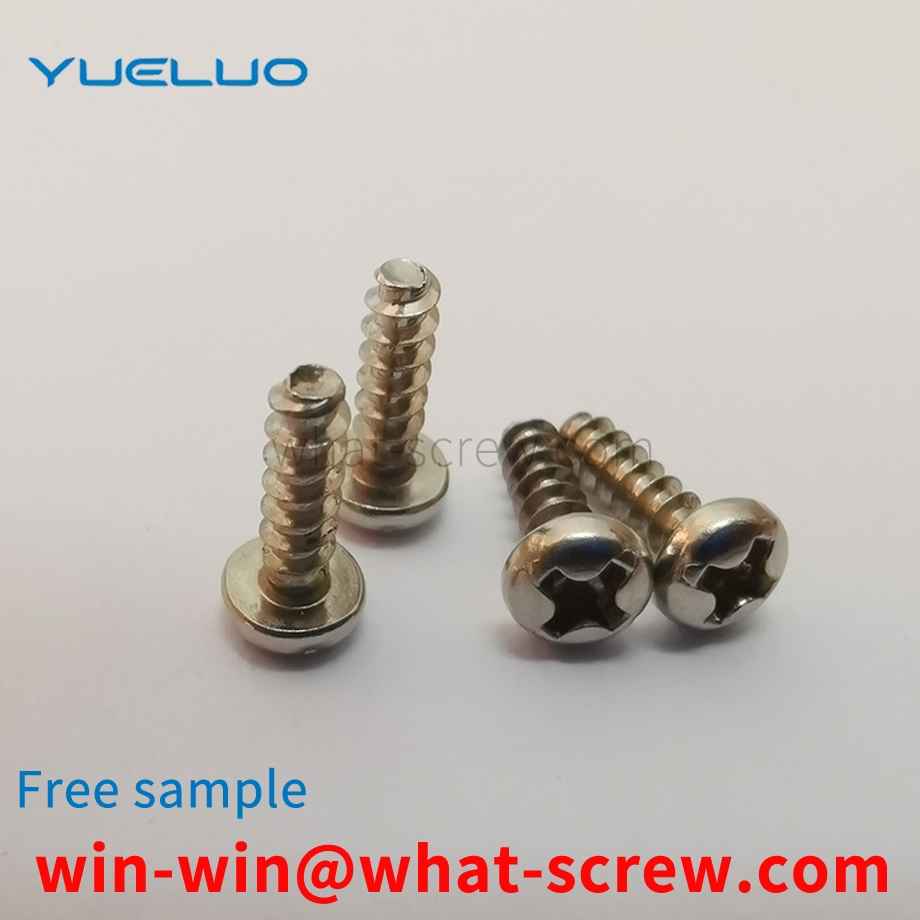Guangdong Yueluo Hardware Industry Co., Ltd. relates to a connecting piece, especially a wood screw used for fixing on non-rigid materials such as wood or plastic. Guangdong Yueluo Hardware Industry Co., Ltd. has a threaded part with a taper angle and a screw head. The head of the screw can be countersunk, hemispherical, or other shapes. As for the grooves for screwing, the grooves can be straight-line grooves, concave cross grooves, or grooves of other shapes.
Standards are norms, and each country and sector has its own standards. GB—Chinese National Standard (National Standard) ANSI—American National Standard (American Standard) DIN—German National Standard (German Standard) ASME—American Society of Mechanical Engineers Standard JIS—Japanese National Standard (Japanese Standard) BSW—British National Standard GB—National Standard The standard is one of the many standards in my country, and there are also industry standards, professional standards and department standards. National standards are divided into: GB (mandatory standards) and GB/T (recommended standards) and GBn (national internal standards) and so on. We usually see GB30, GB5783, etc. are mandatory standards. In addition to some basic dimensions such as head-to-side, head thickness, etc., the above standards are mainly different in the threaded part. The threads of GB, DIN, JIS, etc. are all in MM (millimeters), which are collectively referred to as metric threads. Another thread like ANSI, ASME, etc. is called American standard thread in inches. In addition to metric threads and American threads, there is also a BSW-imperial standard, whose threads are also in inches, commonly known as Wyeth threads. In the usual domestic sales business, the most common standards we encounter are GB (National Standard) and DIN (German Standard). In terms of production products, the following standards are mainly encountered: GB30; GB5783; GB5782; GB52; GB6170; GB818; GB819; GB845; GB846; GB70; DIN912; DIN933; DIN931 and so on. GB30 (old national standard) has been replaced by GB5783 (new national standard) in the standard book. GB52 (old national standard) has been replaced by GB6170 (new national standard) in the standard book.
The technical process of nickel-phosphorus plating for high-strength bolts consists of three parts: The first part is the pre-treatment process, including the precision and appearance inspection of high-strength bolts before plating, manual degreasing, immersion degreasing, pickling, electro-activation and flash nickel plating and other processes; the second part is the electroless nickel plating treatment process; the third part is the post-treatment process, including the processes of hydrogen-displacing heat treatment, polishing and finished product inspection. As follows: Bolt chemical composition inspection → bolt pre-plating accuracy, visual inspection → manual degreasing → visual inspection → immersion degreasing → hot water washing → cold water washing → pickling → cold water washing → electric activation → cold water washing → flash nickel plating → cold water washing → Deionized water washing → Electroless nickel plating → Deionized water washing → Cold water washing → Hydrogen removal → Polishing → Finished product inspection.
At present, the stopping method of the pin shaft stop pin of the general hydraulic excavator is mainly by using a long bolt to pass through the pin shaft stop sleeve pin hole and the pin shaft pin hole, and then use a double nut on the other end of the bolt to force it away from the pin shaft. The outer circle of the stop sleeve is about 2 3mm away to prevent the bolts and nuts from falling off. Due to the structure in which the double nuts are pressed against each other, the disassembly and assembly efficiency of this pin shaft stop method is not high, and two wrenches are required for each assembly and disassembly, which is extremely troublesome.
When the countersunk head screws and hexagon socket head bolts are produced by the cold heading process, the original structure of the steel will directly affect the forming ability of the cold heading process. In the process of cold heading, the plastic deformation of the local area can reach 60%-80%, so the steel must have good plasticity. When the chemical composition of the steel is constant, the metallographic structure is the key factor to determine the plasticity. It is generally believed that the coarse flaky pearlite is not conducive to cold heading forming, while the fine spherical pearlite can significantly improve the plastic deformation ability of the steel. For medium carbon steel and medium carbon alloy steel with a large amount of high-strength bolts, spheroidizing (softening) annealing is performed before cold heading, so as to obtain uniform and fine spheroidized pearlite to better meet the actual production needs. For the softening annealing of medium carbon steel wire rods, the heating temperature should be kept above and below the critical point of the steel, and the heating temperature should not be too high, otherwise tertiary cementite will precipitate along the grain boundary, resulting in cold heading cracking. The wire rod of medium carbon alloy steel is annealed by isothermal spheroidization. After heating at AC1+ (20-30%), the furnace is cooled to slightly lower than Ar1, the temperature is about 700 degrees Celsius for an isothermal period, and then the furnace is cooled to about 500 degrees Celsius and air-cooled. The metallographic structure of the steel changes from coarse to fine, from flake to spherical, and the cracking rate of cold heading will be greatly reduced. The general area of softening annealing temperature for 35\45\ML35\SWRCH35K steel is 715-735 degrees Celsius; while the general heating temperature for spheroidizing annealing of SCM435\40Cr\SCR435 steel is 740-770 degrees Celsius, and the isothermal temperature is 680-700 degrees Celsius.
We have many years of experience in the production and sales of screws, nuts and flat washers. Your fastener solution.



















 Service Hotline
Service Hotline




